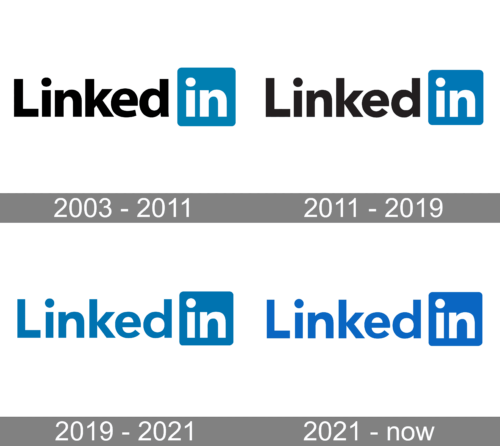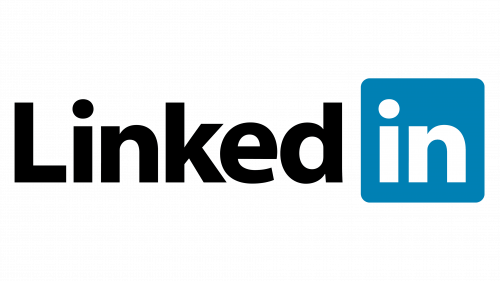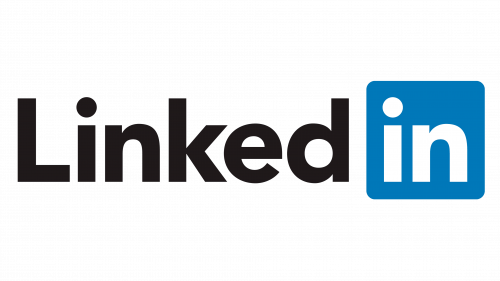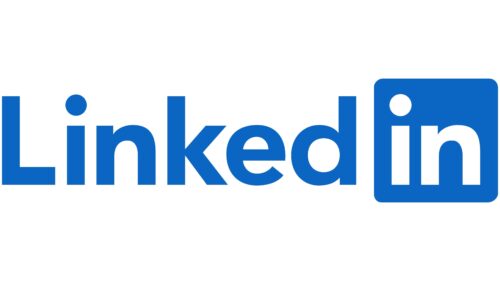LinkedIn is a social network aimed at acquiring professional contacts. Here the user creates a professional profile, searches for new jobs or interesting partnerships, builds networking, and simply communicates. There are more than 875 million people and 58 million companies registered on LinkedIn. Every minute 8 people are employed on this site.
Meaning and history
Father is the founder of LinkedIn – Reed Hoffman. Before founding his main project, Reed Hoffman managed to work at Apple and Fujitsu and was a vice president of PayPal. In 1997, Hoffman decided to found his own project, SocialNet.com, which began to fall apart in its second year. After the failure, Reed Hoffman bet on professionals for whom the Web is not entertainment, but a convenient and useful business tool. Hoffman was inspired by Six Degrees, a social network for business. It gained popularity in the late 1990s and was discontinued. Hoffman and his team wanted to create a new professional social network based on uniqueness and interconnectedness.
Six months after the project began, it was launched. This happened on May 5, 2003. A week later, the site had 12,500 registered users. The introduction of a downloadable address book option in late 2003 accelerated the network’s growth to more than 1 million members. LinkedIn also added a “Create a Group” feature and partnered with American Express to promote offerings for small business owners.
Gradually LinkedIn evolved, adding more and more services. It became possible to add resumes, set up a profile, and search for employees of any specialization. The natural catalyst for the process was also the growing popularity of the Internet. That’s how, step by step, the LinkedIn project steadily grew from an ordinary recruiting resource into a powerful community of professionals.
After four years as CEO, in 2007, Reed Hoffman hires Dan Nye to lead the team. LinkedIn then moves to Stierlin Court and opens a customer service center in Omaha.
In 2008 LinkedIn became a global company, opening its first international office in London, and launching French and Spanish language versions of the site. A year later, in 2008, Jeff Weiner joins LinkedIn as president.
In 2010, the number of users increased 1.5 times, and in early 2011 it exceeded 135 million. The company went to the New York Stock Exchange and held a meeting with President Barack Obama.
The company celebrated its 10th anniversary with a meeting with many journalists, a global party, and 225 million users worldwide. And already in 2016, Microsoft Corporation announced the purchase of LinkedIn for $26.2 billion.
Today LinkedIn is the largest community of professionals from more than 200 countries, and the total number of all users is more than 800 million people.
LinkedIn is based on the well-known theory of six handshakes. It consists of the fact that each person in the world is separated from the other by only six people. Despite the fact that LinkedIn was based on this theory, the management decided to contrast the project with other social networks popular at the time. In this social network, unlike others, it is not possible to contact any user independently. Instead, users are connected by what is known as “trust,” meaning that you can only contact someone you know personally or if you have been recommended to them.
Not only photos and videos can be attached to LinkedIn posts, but also other documents, such as Word and PDF documents. This is a useful feature, considering that on LinkedIn it is common to publish resumes, portfolios, or test tasks for candidates.
You can publish articles on LinkedIn. In addition to traditional posts, LinkedIn gives users the ability to post full-length, detailed articles with illustrations and extensive formatting options. It’s convenient if you’re having trouble finding another external platform for publishing, or you know exactly what your article is interesting to the LinkedIn audience. Your LinkedIn profile is your resume.
Slowly and steadily, based on all his huge experience, Reed Hoffman has managed to build an incredibly successful empire, which many experts are already calling more attractive for investment than any other huge network project.
In 2021 marketers called LinkedIn “the third most important social media platform for marketing. The online platform is second only to Facebook and Instagram in the number of users, but far ahead of YouTube and Twitter.
What is LinkedIn?
LinkedIn is a social network for business communication, finding employees, and opening jobs. Users can post their resumes and detailed work experiences, and companies can post descriptive profiles that will show personal profiles from employees as well. The platform was founded in December 2002, and since 2016 it is owned by Microsoft Corporation. The company has 36 regional offices, ten of which are located in the United States. The social network is available in 26 languages.
In terms of visual identity, LinkedIn has always been very strict and professional, although the logo of the network can’t be called boring or outdated. The iconic badge was redesigned a few times in more than twenty years of the website’s existence, and the style and composition we all can see today is a modified version of the original emblem, introduced in 2003.
2003 – 2011
The original LinkedIn logo was composed of black “Linked” lettering with a solid blue square on its right, where the white “in” in the lowercase was placed. The bold and confident sans-serif typeface of the nameplate was very similar to such fonts as Radiate Sans Bold and LCT Picón Bold. The black, blue, and white color palette of the logo represented the professionalism, seriousness, and reliability of the web portal. The choice of the color palette is easily explained: the black-and-white combination is most commonly associated with a fundamental approach, while blue is a symbol of safety and career development.
2011 – 2019
The first version of the logo stayed untouched for quite a significant period and was only refined at the beginning of the 2010s. The redesign of 2011 only changed the typeface of the logotype, and slightly brightened up the blue shade of the square. The font of the renewed LinkedIn inscription was Avenir Pro, with a bit thinner lines than on the previous version, and the traditional timeless shapes. The lettering looked pretty similar to the original wordmark, and the letter which changed the most was the lowercase “K”. A year later, in 2012, LinkedIn fully redesigns its website and business strategy that led to product innovation and strategy transformation, focusing on two main concepts: to simplify and grow.
2019 – 2021
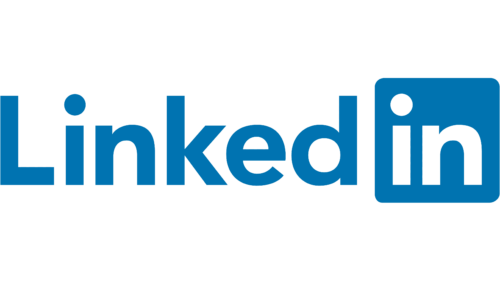
In 2019 the LinkedIn logo was redesigned for the second time, and now the only change was about the logo’s color palette. The black “Linked” inscription was colored in the same shade of blue, that was adopted in 2011 for the “In” square with the rounded angles, placed on the right from the lettering. In comparison to the previous version, the typeface was slightly refined and the dots above the letters “I” are now placed at a bigger distance from the vertical bars, letting in more air, and creating a lighter and fresher look of the logo.
2021 – Today
The third redesign, held in 2021, has played with the shade of blue on the recognizable minimalistic LinkedIn badge. The color got more intense and deep, creating a stronger contrast with the white elements, and making the contours of the characters look cleaner and straighter. The new color palette evokes a sense of stability and trustworthiness, along with professionalism and determination. The intensified shade of blue has made the look of the LinkedIn website brighter and more vivid too.
Symbol
The iconic LinkedIn logo, the symbol of the network for professionals, looks absolutely up-to-date in its minimalism and strictness. The clean contours and simple concept make up a logo, which is definitely from the 21st century. The lack of decorative elements and the laconic color palette is what makes the badge contemporary, and gives it a life with many years in the future, staying actual.
The wordmark comprises the words “Linked” and “in”. There is a barely noticeable spacing between the two parts of the logo. The word “in” is placed in a blue square shape with rounded angles. This softness of the square balanced the distinctive contours of the characters and the straight cuts of its’ bars.
“Short” emblem
In some cases, there’s a need to “reduce” the logo. For instance, if there’s not too much space or the space has a square shape, it is important to make the logo more readable. In such situations, the word “Linked” is omitted, and only “in” stays. For instance, this approach was used for LinkedIn-branded chocolates, which were square in shape.
Also, the blue square with the white lowercase “In” on it, is the most recognizable part of the LinkedIn visual identity, as is used as the main element of the web and mobile app icon, and today the web emblems make up more than a half of success in the brand recognition.
As the purpose of the famous online portal, its visual identity is based on the principles of professionalism, seriousness, and progressiveness. The blue and white color palette shows LinkedIn as a company with a strong position and traditional values, which can be implemented in all processes, including innovative ones.
Icon
The LinkedIn icon is the most frequently used part of the platform’s logo. It can be seen not only on the LinkedIn platform and official materials but also on sites of companies and personal pages of the people, registered on the platform, as the icon hides a link to their profile.
There are two possible versions of the LinkedIn icon. It can whether be composed of a solid blue circle or a square with rounded angles. As for the central element, it’s the same on both options — two white “in” letters in the lowercase, written in the same typeface as the main official logo.
As for the changes and redesigns, here everything was pretty quiet and surprise-less. Same concept, which was only strengthened and cleaned. Some things do not need dramatic lines or acid colors to look stylish and sleek. And the LinkedIn icon is brilliant proof of this minimalistic concept.
Font
The type used in the LinkedIn wordmark is called Source Sans. It can be utilized to communicate any message that has to do with the company. Although the Source Sans font exists in a number of weights, the company recommends to opt for “Light” or “Semi-bold” versions. Also, if you need to communicate key brand messages in longer texts, it is acceptable to use the Source Serif or Source Code types.
The closest available analogs to the corporate LinkedIn typeface are, definitely, Avenir Pro 95 Black, which only differs in small elements, and the spacing between the dot and the vertical bar of the “I”, and Neology Bold, which has a slightly different shape of the lowercase “K”.
Color
The corporate palette comprises three colors: blue, black, and white. The shade of blue, which is called LinkedIn Blue, is the core of the brand’s identity. There may be several reasons why the company opted for blue. One of them is definitely that many people unconsciously associate it with networking and communication via the Internet (note Facebook’s choice of colors, for instance). Also, there were top managers from PayPal among LinkedIn creators, so it’s only natural that the color close to PayPal blue was chosen.
In addition to this, the psychological symbolism of blue involves such virtues as intellect, authority, power, and success, all of which resonate with the brand’s identity.
By default, the LinkedIn personal profile page has a gray-blue background, which uses a corporate shade of blue and several tones of gray, ranging from dense to almost white. The gray here only reinforces the “professional” bias of the platform but can be changed by each user to any other image, just like the blue circle on the profile photo.



